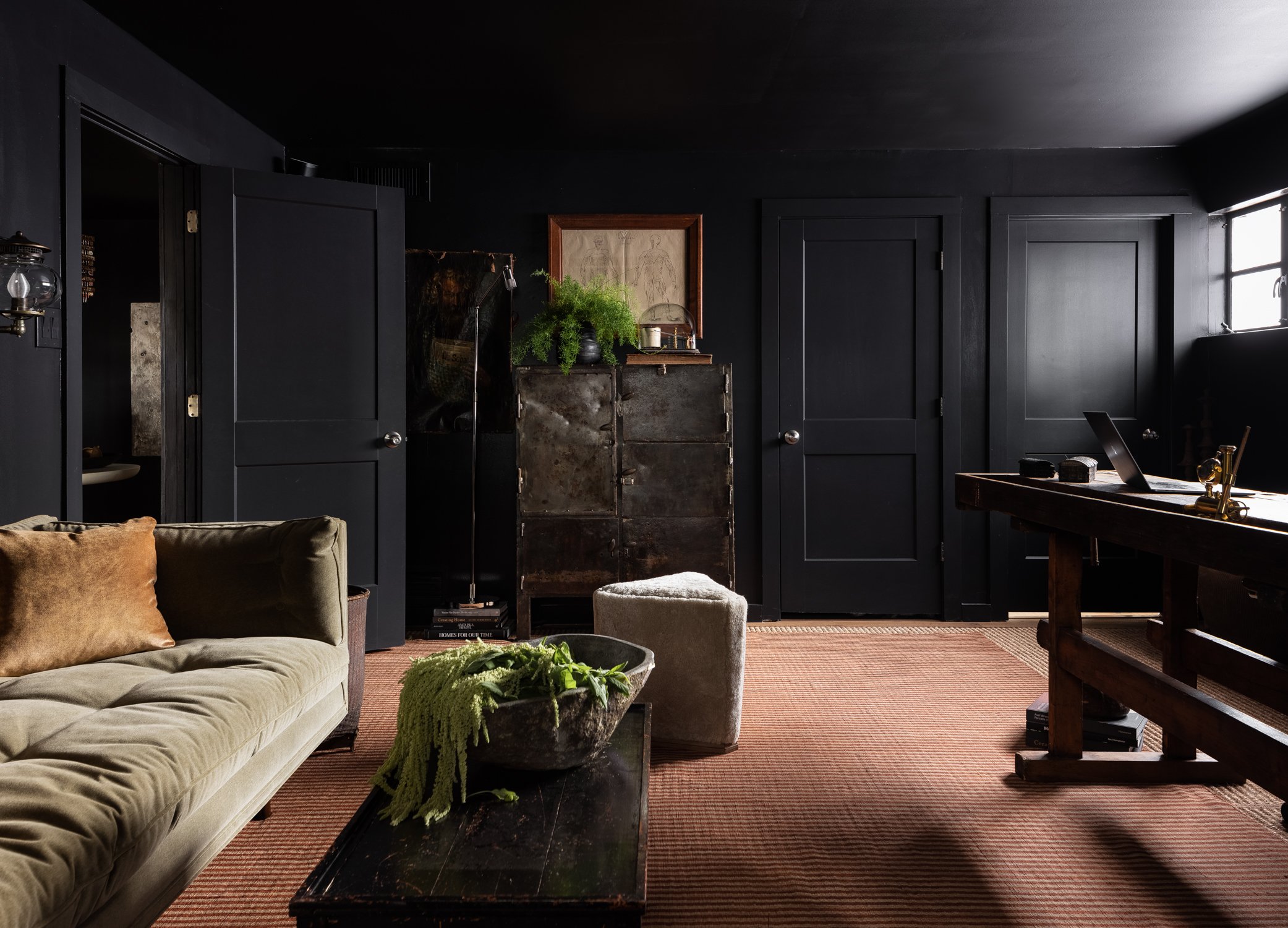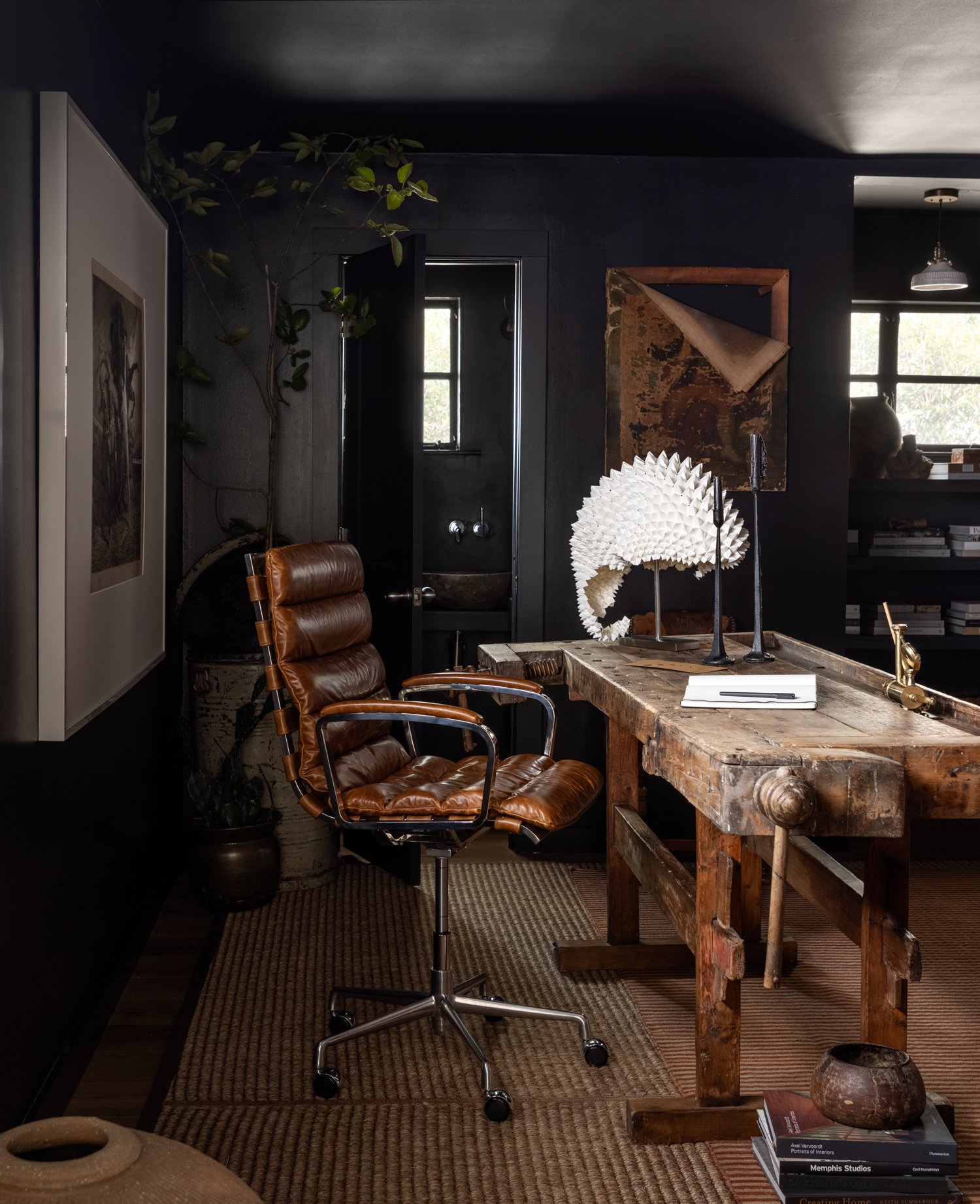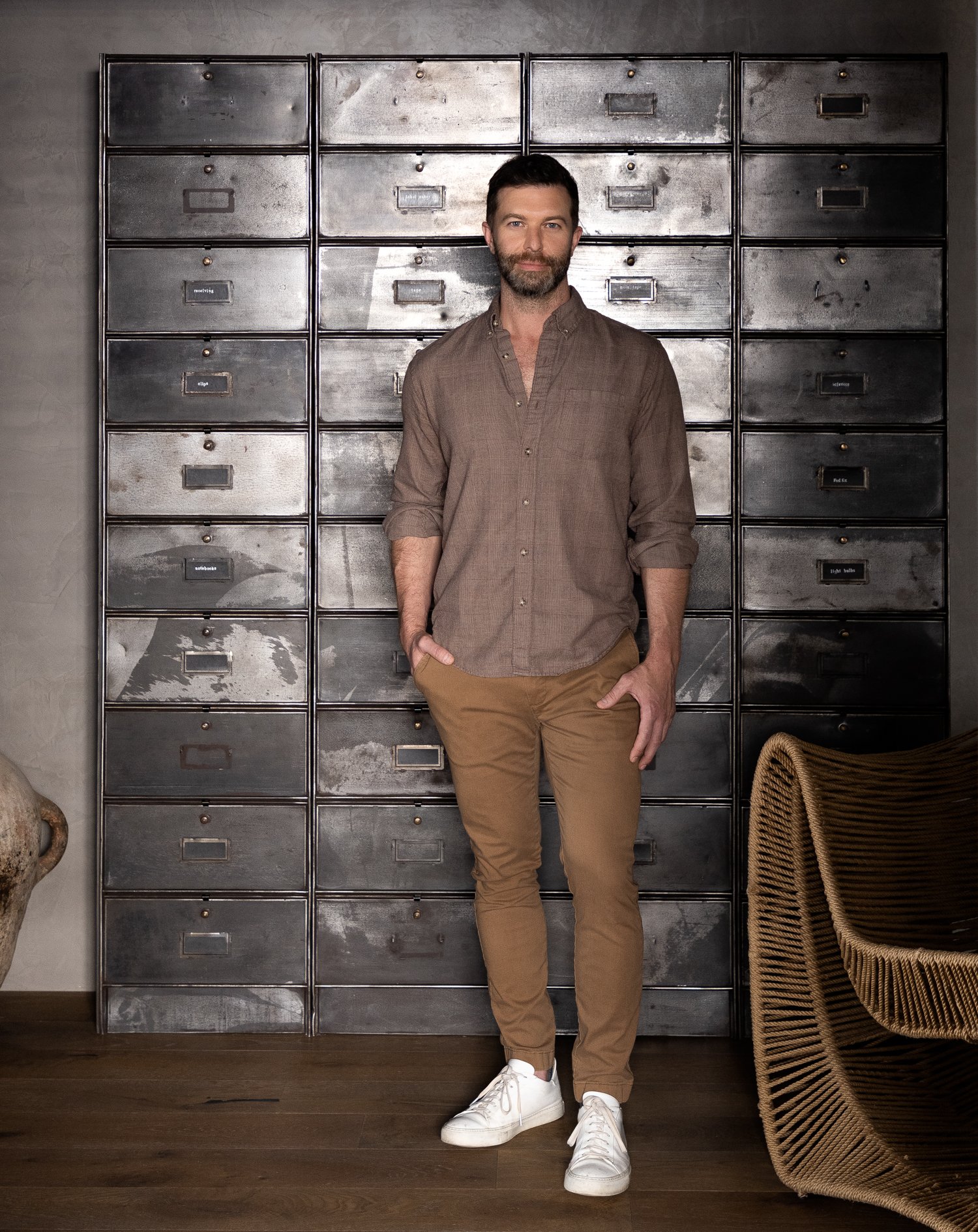AD Pro: December 2021
Step Inside Sean Anderson’s Memphis Studio, Where Black Interiors Inspire Creativity
Written by Alia Akan| Photography by Haris Kenjar | View Article
His traditionalist design roots and innate southern charm would never be a tell, but Sean Anderson has an affinity for darkness. The tonal, mood-setting kind, of course, that often cloaks the walls and ceilings of his residential projects in deep, dark hues. The effect—just like the Memphis, Tennessee, designer himself—is rich with soul. For proof, look no further than Anderson’s office, situated in a small, boxy building in Memphis’s Midtown district, with its black façadepaving the way to the equally cocooning palette inside.
“People think black is oppressive, but it has the opposite reaction for me,” Anderson tells AD PRO. “Black is comfortable and cozy.” Against such a backdrop, Anderson and his six-person team can sprawl out with ease—a significant upgrade from the cramped, single-room office the firm had nearly two years ago. “It just wasn’t working,” Anderson says, “but I love to see how the new place has affected the team. We are inspired every day.”
His traditionalist design roots and innate southern charm would never be a tell, but Sean Anderson has an affinity for darkness. The tonal, mood-setting kind, of course, that often cloaks the walls and ceilings of his residential projects in deep, dark hues. The effect—just like the Memphis, Tennessee, designer himself—is rich with soul. For proof, look no further than Anderson’s office, situated in a small, boxy building in Memphis’s Midtown district, with its black façadepaving the way to the equally cocooning palette inside.
“People think black is oppressive, but it has the opposite reaction for me,” Anderson tells AD PRO. “Black is comfortable and cozy.” Against such a backdrop, Anderson and his six-person team can sprawl out with ease—a significant upgrade from the cramped, single-room office the firm had nearly two years ago. “It just wasn’t working,” Anderson says, “but I love to see how the new place has affected the team. We are inspired every day.”
Like an ever-changing mood board, the office may be better defined as “a moving gallery,” teeming with “weird, obscure things that don’t really fit everywhere but that I like and picked up along the way,” says Anderson, whose clientele is mostly based in the South, with a few recent projects in Utah and New York. Consistently rotating in antique furniture and art from the firm’s nearby warehouse, Anderson assures that “if something begins to feel sterile, we shift stuff around. I like to use this office as a canvas, to show the extent of what we can do.”
More often than not, the pieces create the perfect fodder during client consultations. Or perhaps even a spot in a project, as was the case with an in-the-works bridal boutique, Anderson’s first foray into commercial design. “I trust the process; they will find a home when they are meant to.”
Yet it’s not until the marrying of old and new that Anderson’s skill is best articulated. By bringing together the age and wear of, say, an old leather club chair or an endearingly scraped-up wood bench with modern fixtures, he creates richly organic and evocative interiors. Again, the office is evidence: At the entry, guests are greeted by a concrete dining table from CB2 and a duo of curvy rope chairs that Anderson snagged at an estate sale.
The vignette is buoyed by a square chandelier with industrial undertones that once hung in a local factory, as well as an old metal filing cabinet stocked with office supplies. The walls—in contrast to the black ceiling—are finished in Roman Clay to “add a bit of texture and lightness,” Anderson says.
That affinity for darkness becomes most enveloping in Anderson’s office, a floor-to-ceiling black space that “is more like a living room,” the designer says. Generally, colleagues find him perched on an Italian Berkshire leather-swathed RH chair at his desk, which is a workbench he bought at an antique shop in Georgia. If not there, he’s likely poring over one of the design books on display. In the evenings, long after his team has gone home, he’s curled up on the vintage velvet green sofa brainstorming ideas and sourcing for projects. The storied objects in this room, such as the dragon-shaped desk lamp redolent of origami, or the wall sconces that had former lives as gas lanterns, are known to be inspiring: “Surrounding myself with these things fuels me creatively throughout the day,” Anderson says.
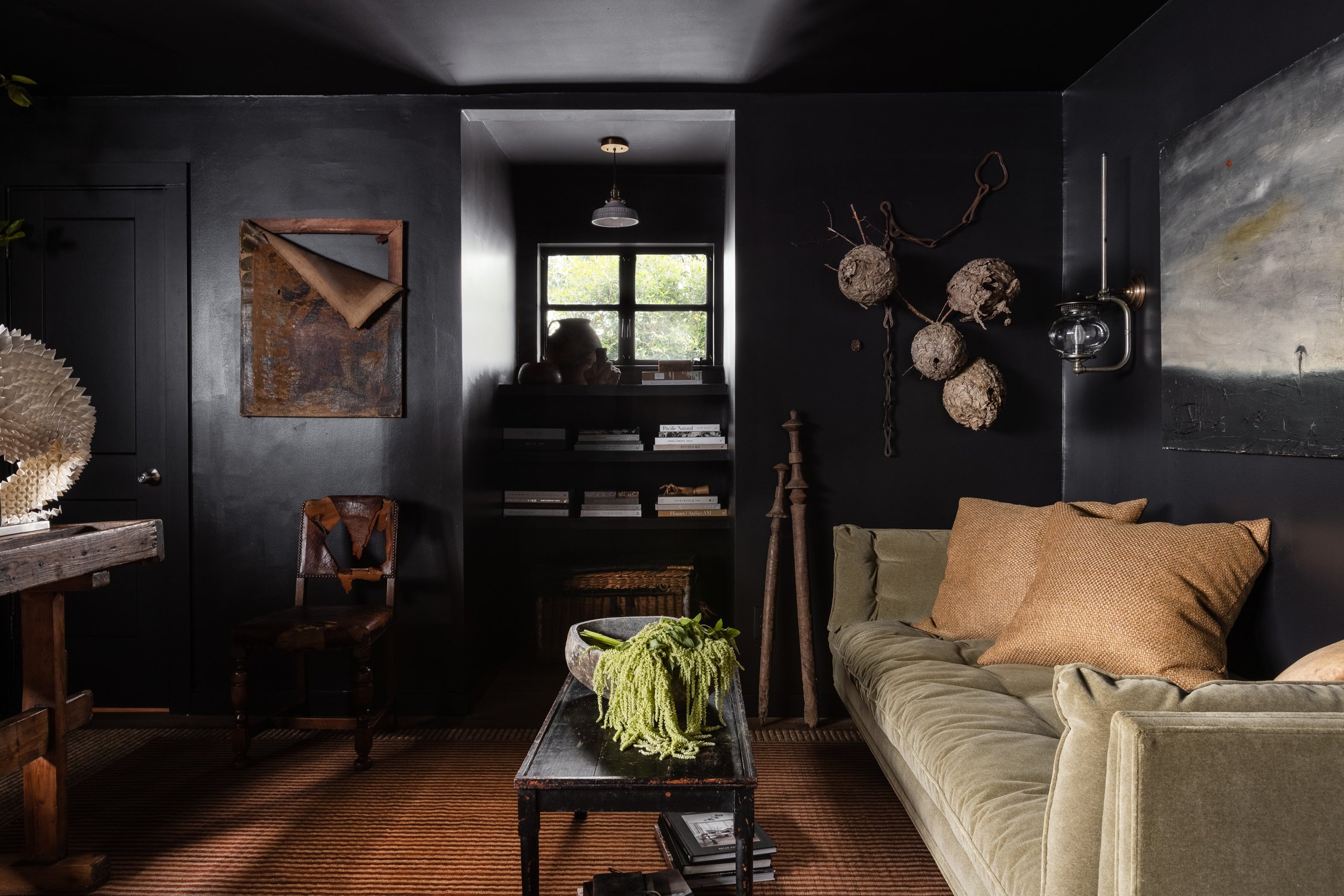

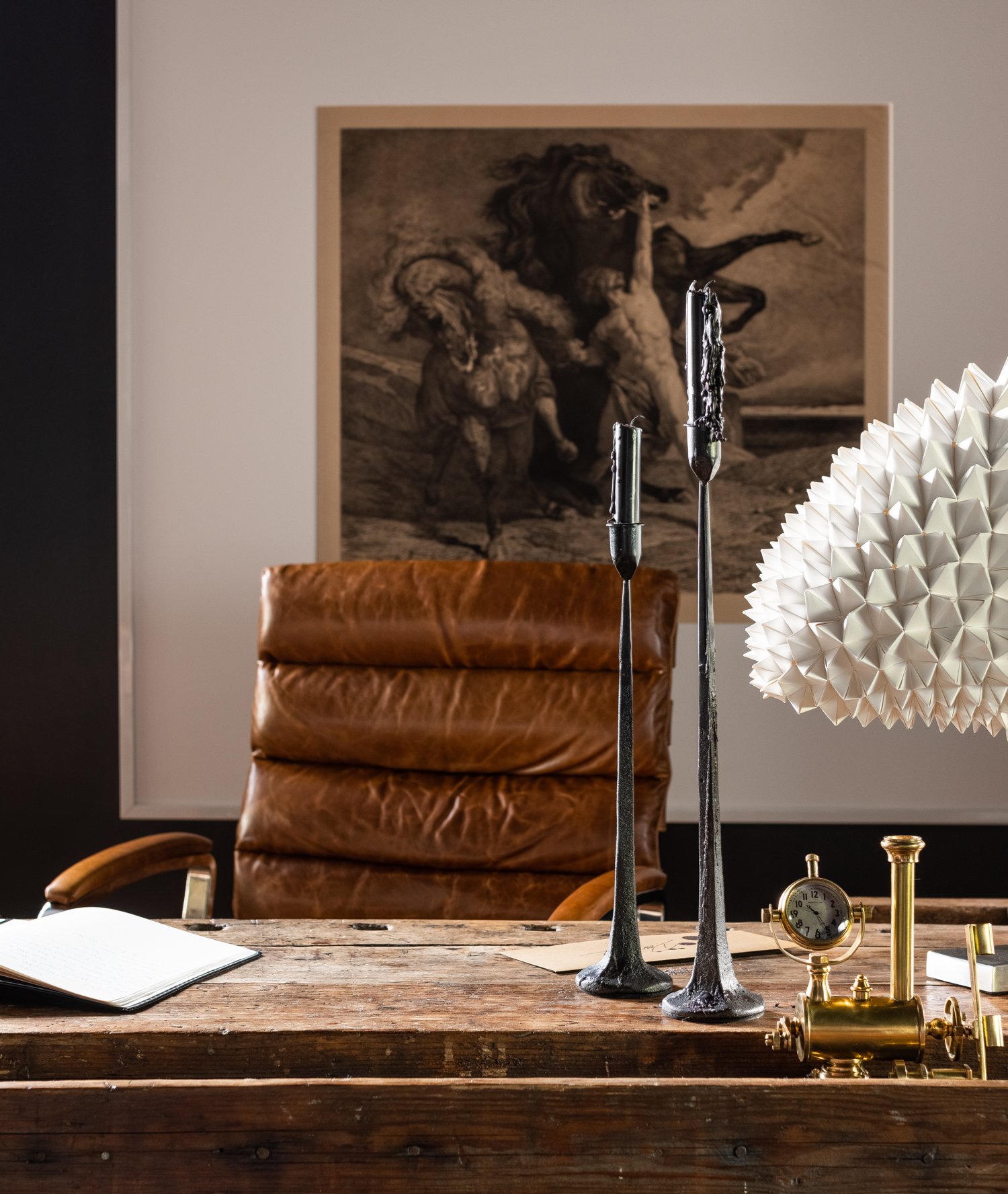
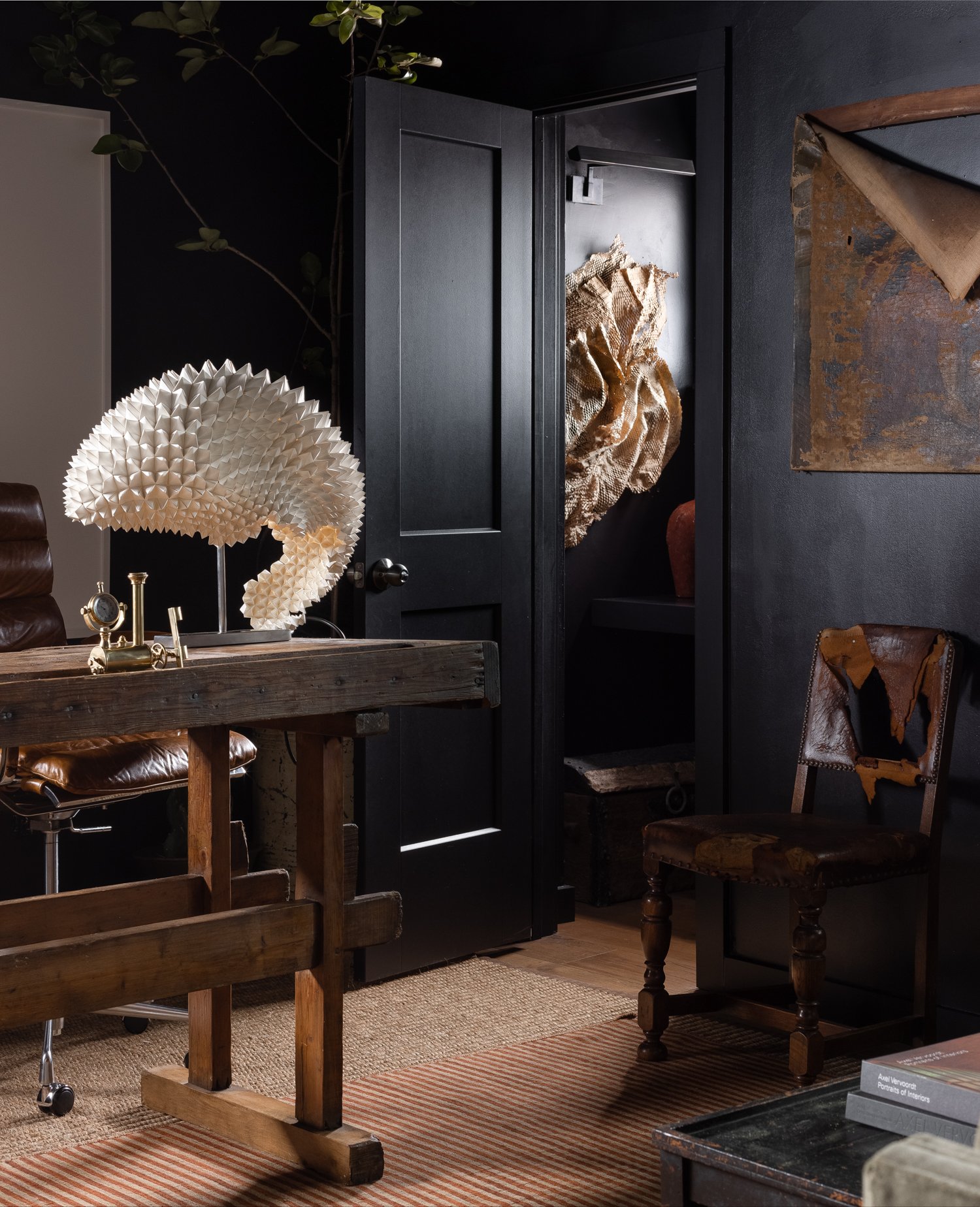
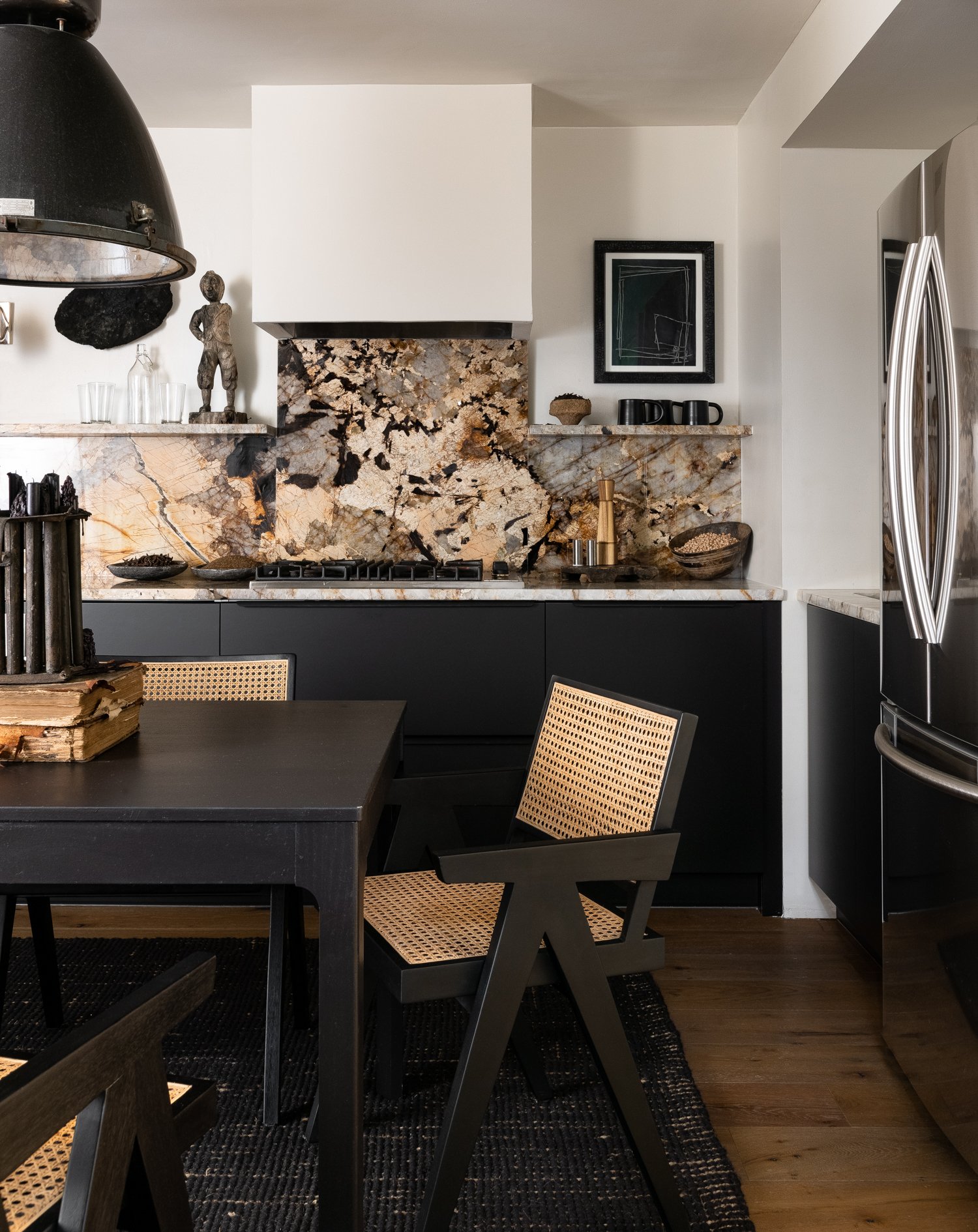
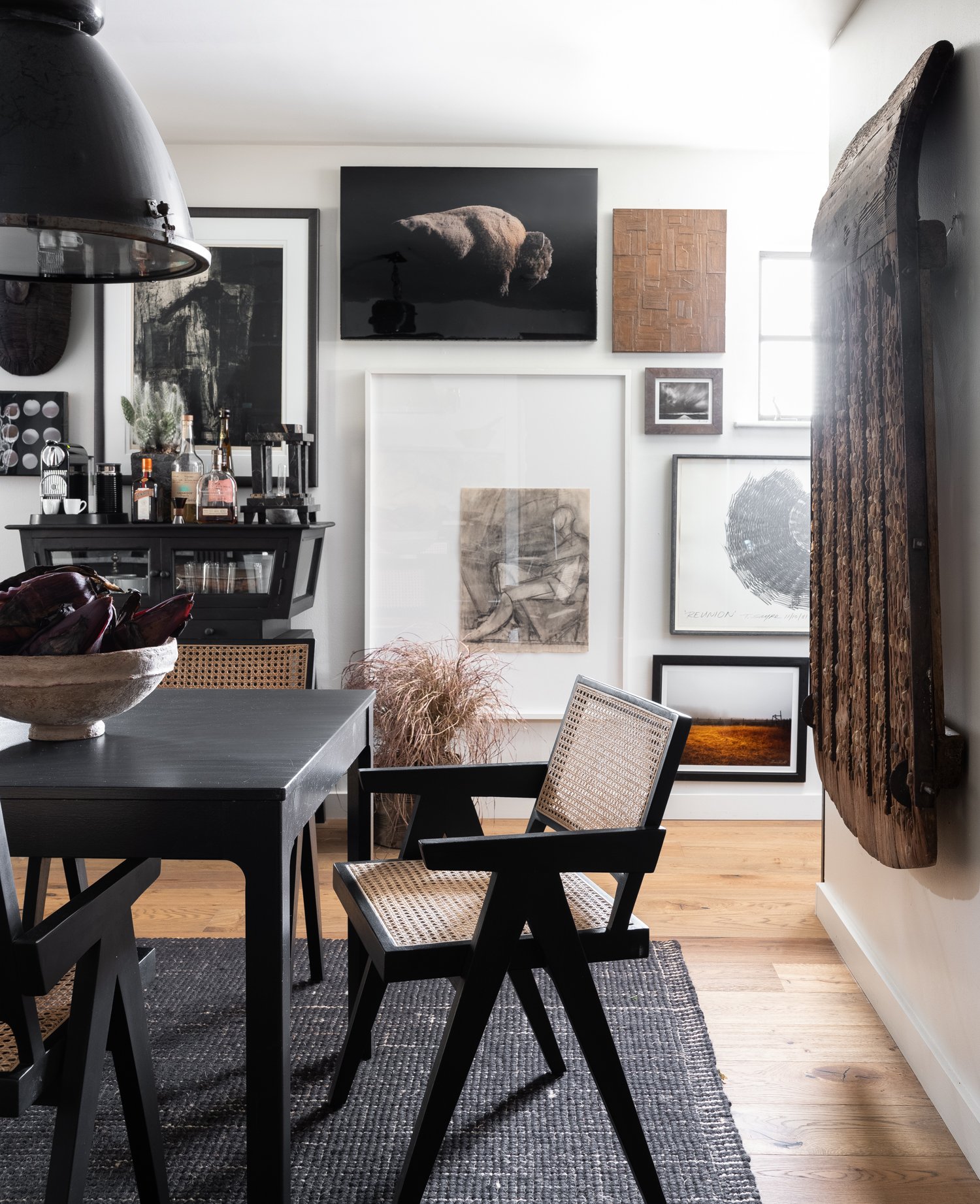
In addition to creating moody environs, Anderson’s preferred black walls create an enriched backdrop for art to pop. Namely with black illustrations or etchings, as is the case with asymmetrically framed artwork behind the designer’s desk. And rather than fix the torn-up work on the wall near the doorway, Anderson embraced its imperfections and left the top corner in its attractively flawed, unraveling state. As a nod to his southern roots, he also highlights pieces from regional artists, including Cydney Parkes, Justyn Chapman, and Ashley Finnemore. The kitchen, where convivial staff lunches take place, is covered in found and commissioned art.
The studio’s shadowy interiors are almost always accompanied by music, a slow-burning candle, and plenty of florals “to soften the rooms,” Anderson says. Olly, the Husky he rescued a few years back, has also become a joyful fixture in the space. It’s not only the office’s beauty, but also the orderly fashion that makes it difficult to believe a jam-packed pipeline of projects is underway here. Anderson’s big secret? The studio’s sample library is located a few doors down.
“It gets so messy pulling fabrics, and I wanted to be able to leave the office in order so that we come in every day and it’s not too chaotic,” Anderson admits. Coming from a man who’s an expert at producing a mood within a space, the office is no place for chaos.


